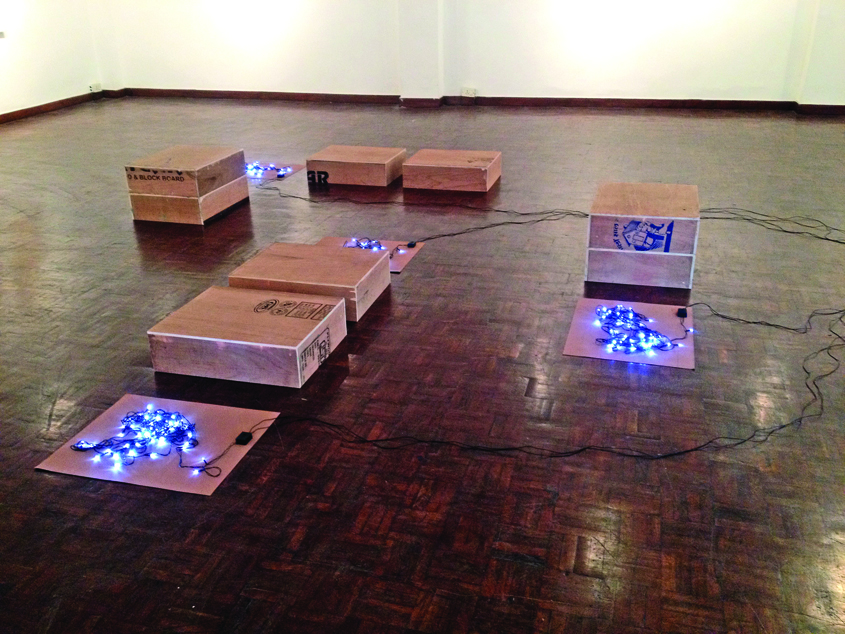“This is a daily sight at Jamshedpur,” says artist Anni Kumari. “In my series of artworks, titled Between the Coal Mines flows the Golden Streak, I have pictorially represented the life around Swarnrekha, which means streak of gold. I vividly remember sometimes going around the river in a khakhi–coloured jeep with my father. There are factories around the river. Due to various mining activities, the gold and other minerals uproot and slip into the river. The men and women take up the work of filtration. In my work, I have represented the river with a golden line as the name suggests, depicting the impact of industrialisation. People from Delhi might have hardly seen gold so raw… in the form of rock.”
Kumari’s work forms the fulcrum of the exhibition Some Things Change, now on view at the India International Centre, New Delhi. In this collaborative exhibition, Indian artist Anni Kumari and Jasone Miranda-Bilbao from London explore the possibility of art if it encounters any change in terms ofperspective, material, form, place and the like. “It was in 2013 that we began an exchange of ideas surrounding the question — what can be the potential of art in regard to effecting a change? What we witness in this exhibition is an enquiry explored from within the individual artist’s perspectives,” says Miranda-Bilbao.
The work of Miranda-Bilbao takes into account the question of how we position ourselves in relation to the world around us by means of movement, space and form. Graph Paperby Miranda-Bilbao is one of an unlimited series of drawings that the artist started in 1999. Since then, several have been completed, each taking months to finish. She says, “Over the lines of the graph, I replicate what is already there with a pen. At first, this could seem a futile exercise that adds nothing new but a longer and slower time of contemplation unveils other more subtle layers of meaning. The work pursues depth through movement, although this might be slow, across a space that is predefined by its limitations. By retracing those limits with maximum simplicity of means, it produces another space where an understanding and a play in excess of and beyond those limits can take place.”
“In my series of artworks, titled Between the Coal Mines flows the Golden Streak, I have pictorially represented the life around Swarnrekha, which means streak of gold. I vividly remember sometimes going around the river in a khakhi-coloured jeep with my father.”
In her sketch titled Graph flattened, the pen-work takes the approach of a child learning to draw. Graph filled and Graph flattened develop the same theme. She says, “Here I have coloured each individual square of a number of small sheets of paper then added the individual pieces to form a larger unit. The process of making the drawings has again been simplified to the minimum — it is slow, repetitive and it requires a particular focused persistence and state of mind. The works are modular and remain open-ended, more sections will be added with time, changing and unfolding toward an expanding whole.”

Miranda-Bilbao’s works are meditative in nature. It seems that the artist has worked her way well with her chosen parameters. In another of her pieces, Miranda-Bilbao plays with movement
The artist divides her time between Delhi and London. She is not deterred by the challenges in terms of availability of material, space and the like when working in two different settings, but rather accepts things as they are. This also forms the subtext of various other artworks in the exhibition. “I think of these not as limitations, but as a matter of fact, and I am quite happy to just embrace the limitations.”
The exhibition is on view till 17 January 2017at India International Centre, Annexe, New Delhi

